
Explore over 300 member properties ranging from the smallest New England country inns to the most exclusive hotels and resorts, state by state.
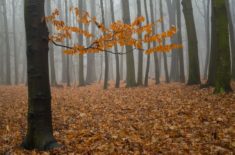
This time of year, the vivid beauty of New England’s fields and forests, dressed in golds, oranges, and reds, is truly captivating. It seems to us that the very best way to enjoy the fall splendor is to fully immerse yourself in it. Come stay at a remote New England inn, and head out into the wilderness for a respite from reality. While you’re out there, try your hand at the age-old craft of food foraging. From fungi to berries, the bounty of New England’s fertile woods abounds. Note: this post is not intended as an official guide for foraging in New England. Be sure to check any and all food you forage in an official guidebook, as some plants and fungi are poisonous to consume, and can be easy to misidentify.
Explore Culinary Offers and Packages
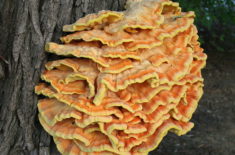
If you’re looking for the perfect mushroom to fill out a vegetarian meal, Chicken of the Woods is your fungi. Found all over the Northeast, this classic shroom has a firm, chicken-like texture, and nice mild flavor. Check deciduous forests, particularly oaks, and keep your eye peeled for a pop of vibrant orange! Easy to spot, hard to misidentify, and smooth goin’ down, Chicken of the Woods is the perfect pick for the burgeoning food forager. This is only one of so many other edible mushroom varieties to be gleaned from the New England woods and fields.
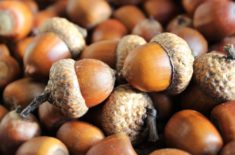
Any New Englander knows that when the leaves start falling, so do the acorns. Contrary to what you may believe, acorns are more than just squirrel food. Besides the wild animals that rely on acorns to fatten up for the winter, these common nuts are perfectly suited for human consumption as well. Once you’ve collected your bucket of acorns (an easy feat in any Northeastern fall forest), you’ll have to separate the good from the bad. A quick swim, and you’ll note that some nuts float to the top, while some sink to the bottom. Ditch the floaters and scoop out those dense bottom nuts for processing. Acorns are quite bitter and carry heavy tannins before processing, so be sure you’ve set some time aside to make these nutrient-dense little nuggets fit for your taste buds!
This prolific New England wild crop is one of the food forager’s best kept secrets. The creeping vines and wide, flat leaves can be seen all over the region, adding color and beauty to telephone poles, buildings, and backyards. In the fall, these viney greens yield small, deep purple (black at first glance) fruit.Sour and sweet, fresh and juicy, they are the perfect fall treat. Preserve them as an excellent jelly or jam, eat them raw, or use them in baking.
If you need another reason to book an autumn beachside vacation (other than empty beaches, stunning views, and cozy morning coffee on the beach, that is), this succulent wild green may be the final push you need. The American Sea-Rocket grows among the rocks on New England beaches and offers a fresh and peppery flavor that’s perfect for brightening up your average salad. While indulging your beach bum side, give a nod to the food forager in you, and pluck a few of these delicate little “weeds” to spice up your supper.
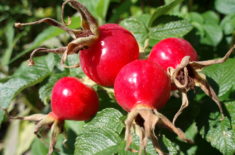
While we’re on the topic of beach bounty, those beautiful beach roses lining the boardwalks are more than just a pretty flower and a delicate scent! Roses of all kinds produce an oft forgotten superfood: rose hips. The densest source of vitamin C, these delicious little morsels ripen in the fall, and can be eaten raw, or dried and brewed into nutritious tea. Keep the sniffles at bay with this immune-boosting foraged find!
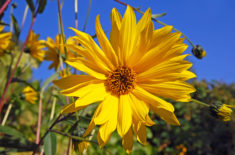
Related neither to Jerusalem nor any variety of artichoke, the Jerusalem artichoke is certainly the trendiest misnomer of the season (also referred to as “Sunchoke”). Popping up all over farm-to-table menus, the Jerusalem artichoke is actually a wild root (though it can also be cultivated), and offers a light, artichoke-esque flavor. As you’re foraging for food, keep your eyes out for tall, skinny stalks with bright yellow flowers at the top – the roots are ready to harvest when the flowers begin to fade. These delicate little tubers are delicious raw, pickled, or pureed (find your true inner New Englander and whip up a sunchoke and cheddar soup to stave off the October cold).
Black birch trees grow all over the Northeast, and can be easily identified by their smooth, shiny, charcoal gray bark and their pungent, wintergreen scent (and flavor). Gather the twigs from the black birch and turn them into a minty tea, or simply munch on a twig as you wend your way through the New England countryside. Before the ground freezes and the food foraging landscape becomes far less fruitful, head to New England for a unique culinary adventure! The rustic vacation of your dreams is waiting for you in the mountains and foothills of the Northeast. Grab your bags, your boots, and a basket and hit the road for a weekend full of authentic New England food, accommodations, and experiences.
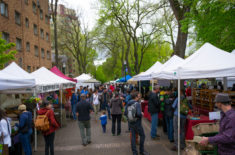 Local Farmer's Markets
Local Farmer's Markets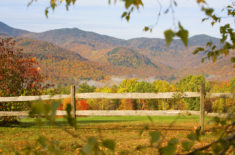 Vermont Fall Vacations
Vermont Fall Vacations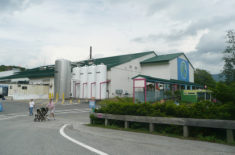 Unique New England Foods
Unique New England Foods